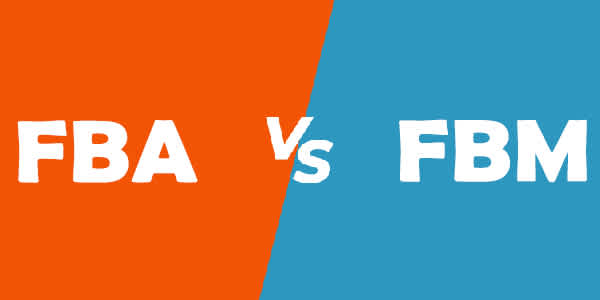There are mainly 2 sustainable Amazon selling models* :
1. Arbitrage
Arbitrage means that you find an item at a local store or on an eCommerce website for a lower price than the one on Amazon, then you offer it on Amazon for a cheaper price than other sellers in hopes that you either win the Buy Box, or some buyer will go through the seller's list and pick your listing because of your price advantage.
This is the cheapest and fastest way to start an Amazon business, The good news is you could start retail arb with just a couple hundred bucks for a printer and labels.
You won't make much in whole dollar terms, but it will give you a good idea if selling on Amazon is something you want to pursue further.
To start, you will need a quick FBA/FBM Calculator, and whenever you are shopping, once you spotted an item that you are interested in selling, scan it and check the Amazon price, there is a good easy tool that helps with this process: called SCOUTIQ which shows you how good the item's sales, and how much money you could make. Alternatively, you can research online from other eCommerce sites for items that you like, there is a good website that helps find many arbitraging and researching tools.
2. Private Label
Private Labels mean that you own a brand registered at USPTO or other brand authority in other countries, then you either order an OEM (non-branded) product and ask the manufacturer to customize your brand logo on the product, or you create your own product with help from factories.
Regardless of whether you are using FBA or FBM, his business model requires some significant investment, this is because you will buy in a wholesale quantity. assuming you are registering a brand, start off with 10 products 20pcs each, with a total average cost of $10, which will come close to $2500 ($2000 for products, $500 for the brand), then you should have reserved capital, and that's because Amazon will send your first payment 1 month after your first sale (there is 2 weeks lockup period), so in case you want to reorder some items within this month, you need more capital, you need to take shipping time in consideration too, the more shipping time is, the more capital you will need., so to make sure you won't run out of capital, keep around $2500 on the side. This will bring your total initial investment for 10 products to around $5000. based on that, adjust your budget by decreasing or increasing product count.
Expect to invest much more if you want to create your own product from scratch to at least $10,000 per product for a quantity of 2000 and a $15 selling priced item which is not recommended at all when you are starting.
Understand with smaller capital you’ll have slower returns, don’t get worried about what others are doing, stay focused, and build a brand as soon as you can.
The hardest part is coming up with the capital to reorder in larger quantities if your item is successful. Take every cost into account and do all the math. Most people fail on Amazon because they are "surprised" by the fee structure. Not every product is feasible to sell at a profit on Amazon.
In your niche research, try to start with less competitive products, that's because you don't want to spend all the money you made on advertisements. we suggest you install Keepa Extension to check any product's historical sales rank and find more tools to help you in your niche research.

Then there are 2 ways to sell on Amazon* :
A. Fulfilled By Merchant
This business model usually called FBM means that you are responsible for inventory management, including buying the items, shipping them to the customers, and handling all the returns and refunds.
Whenever you receive an order, buy the item, keep the receipt (in case it was returned) and ship it directly to the customer then provide Amazon with the shipment tracking number.
The main problem in this model is that if you received an order and the vendor is out of stock, so make sure you have multiple vendors to fulfill the orders.
Once you master this plan, It's time to start your own inventory management program, looking at the previous 6 months' orders, you can predict your monthly sales and store the fast-selling products at your premises and fulfill them quicker.
Finally, Once you work your way and ship many orders quickly with few returns, Amazon will offer you to join the Seller Fulfilled Prime program, where you can have the Prime badge that will help your sales take off.
B. Fulfilled By Amazon
The main difference is that instead of buying the items whenever you receive an order, you will need to buy the inventory in advance and ship it to the Amazon fulfillment center, your inventory will be available at the Amazon warehouse depending on how long the shipping time is. Amazon will do the fulfillment and the returns/refunds on your behalf.
Make 20pcs each of a few different things and list them all. Send them into FBA, and get a feel for that process. Reinvest in whatever sells best.
That will help you feel how everything works before ordering a ton of inventory.
The main disadvantage of this method is that you need to invest in buying and sending your initial inventory without any guarantees that anything would sell.
The worst thing that happens with FBA is when you keep running out of stock, so if it’s a slow mover you can keep up while learning and saving more money.
Invest in learning about the FBA game and into product research. By "invest" I suggest investing time rather than money, There're gurus out there selling dreams but most can be gathered for free on YouTube and Reddit, so do not buy any classes because most of them are outdated, Amazon changes very fast, and what used to work before does not work anymore.

How Long Does it Take to Make Money?
With FBM expect to make money after 6+ months.
With FBA, expect to keep rolling over every dollar for 24+ months before taking any money out.
With smaller capital, you’ll have slower returns, More money = faster start-up, and cash flow. You can do it with little money, but be prepared to work for a few years before you scale up.

FBA / FBM Pros and Cons
The Cons of FBM are:
Your shipping time will be slower than FBA.
Your shipping cost will vary depends how far the buyer is.
You need to manage buyers' returns.
There are fewer buyers who trust 3rd party sellers, most buyers prefer to buy using Amazon fulfillment because of faster delivery and no hassle with returning the items.
Your account could be at risk if you have multiple customer returns.
Buyers could scam you by saying they did not receive the item or received a different item, and most of the time there is nothing you can do about it.
The Cons of FBA are:
The initial investment is high.
Expensive fulfillment prices.
Restrictions on some items, like dangerous goods, pesticides, Kid's Toys, etc. you will need to apply for a certificate on each product.
Any preparation mistake and you could mess up your inventory and most of the time, the only way to fix it is to return the items and re-label them.
Storage fees increase the more time your items stay in the Amazon warehouse.
NOTE: * Vendor Central & Supplier Central are not covered in this article.
